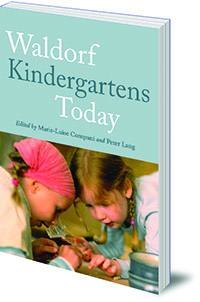Steiner-Waldorf Education: FAQs
by Floris Books • 30 October 2013 • Steiner-Waldorf Education • 0 Comments
 Floris publish and distribute the widest selection of Steiner-Waldorf education books in the UK, including books for Waldorf teachers and books on special education. Our latest book in this range is Waldorf Kindergartens Today, a valuable overview of modern Waldorf kindergartens for both teachers and parents. See our full list of Steiner-Waldorf education books here.
Floris publish and distribute the widest selection of Steiner-Waldorf education books in the UK, including books for Waldorf teachers and books on special education. Our latest book in this range is Waldorf Kindergartens Today, a valuable overview of modern Waldorf kindergartens for both teachers and parents. See our full list of Steiner-Waldorf education books here.
Below are five frequently asked questions about Steiner-Waldorf education:
What is Steiner-Waldorf education?
It is a humanistic approach to education based on the theories of Austrian philosopher Rudolf Steiner. The goal is to develop free, morally responsible and integrated individuals with a high level of social competence.
Who was Rudolf Steiner and what is Anthroposophy?
Rudolf Steiner was born in 1861 in what was then part of the Austrian empire (now northern Croatia). He wrote and lectured on a wide range of contemporary issues including architecture, medicine, philosophy, science, economics and social reform as well as education. Steiner-Waldorf schools, biodynamic agriculture and a variety of therapeutic and curative initiatives are amongst the most well-known practical applications of his work.
He founded the Anthroposophical Society, which postulates the existence of an objective, intellectually comprehensible spiritual world accessible to direct experience through inner development.
How many Steiner schools are there?
The first school was founded in 1919 in Stuttgart, Germany. At present there are over a thousand independent schools, 2,000 kindergartens and 600 centres for special education, located in 60 countries.
What makes them different from other education systems?
There are several differences between Steiner-Waldorf education and mainstream education in the UK. Here are some important ones:
- Academic learning is de-emphasised in the early years of schooling. There is no academic content at all in Waldorf Kindergartens.
- Pupils have a class teacher who will stay with them for a number of consecutive years. In some schools this means from years 1-8, in others pupils will have one teacher for years 1-5 and another for 6-8.
- There is often a focus on qualitative rather than quantitative measures of progress, meaning that there is much less emphasis on exams. (Although many Steiner schools in the UK do offer a number of GCSE and A level courses.)
- Activities such as art, crafts and music take a much more central role in the Steiner-Waldorf curriculum than in other school systems. Particularly in the early grades, all subjects are introduced through artistic mediums.
What is the difference between Steiner-Waldorf schools and Montessori schools?
At first glance, Steiner-Waldorf schools and Montessori schools look very similar; both focus on holistic philosophies and both emphasise the child learning from themselves.
But there are many differences. For example, Montessori schools introduce academic learning at a very early age – children start learning to read and write at pre-school. Steiner-Waldorf schools concentrate more on fun and imaginative play with reading and writing not introduced until much later.
Another key difference is in the approach to arts and creativity. In Steiner-Waldorf schools, art, music and imagination are of great importance and lie at the centre of most lessons. In Montessori schools on the other hand, creative and artistic play involve strong links and ties to ‘real world’ subjects like maths and science.
How is reading taught in Steiner schools?
Steiner-Waldorf education is deeply bound up with the oral tradition and the teaching of all subjects reflects this. Mastery of oral communication is seen as integral to all learning, and as such, reading is often deferred. Instead, writing is taught first, with children being introduced to the alphabet in their first year of school by exploring how each letter has evolved out of a pictograph. In this way, writing develops naturally from the child’s art, and reading develops naturally from learning to write.
For more information on Steiner-Waldorf schools and education, including in depth answers to these questions, please visit the Steiner Waldorf Schools Fellowship website in the UK and AWSNA (Association of Waldorf Schools in North America) in the US.